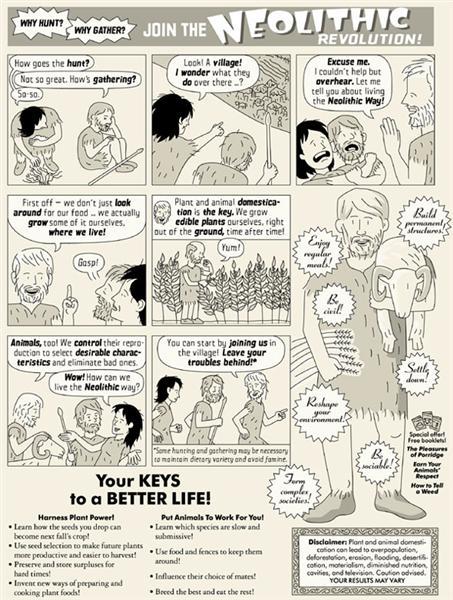As regular readers of the blog know, there are profound differences in supernatural beliefs and practices before and after the Neolithic transition. This cleavage is so substantial that I do not use the term “religion” to describe pre-Neolithic or Paleolithic beliefs and practices. Instead, I use the word “supernaturalism” to indicate that Paleolithic peoples were shamanic.
While shamanic beliefs and practices may constitute “religions,” I prefer to reserve that term for the more organized and systematic forms of supernaturalism that emerge in conjunction with the Neolithic transition. My preferences in this regard are driven by the need for definitional and descriptive clarity, and do not constitute a normative judgment about whether a particular constellation of beliefs-practices deserves to be called a “religion.”
With this in mind, we can conceptualize the Paleolithic-Neolithic cleavage as follows:
Paleolithic Supernaturalism (50,000-10,000 years ago):
Hunter-Gatherers; Nomadic Foragers; Shamanic Supernaturalism; Individualized and Fluid Beliefs
Neolithic Religions (~10,000-2,500 years ago):
Agriculturalists; Sedentary Food Producers; Organized Religions; Communal and Systematic Beliefs
These are basic divisions and finer-grained distinctions can be made but this is a fundamental divide in the history of religions. It also constitutes a fundamental divide in human history.
At the heart of this divide is the shift from foraging to food producing, known as the process of Neolithicization. It occurred at different times in different places in different ways. It was a mosaic, uneven, and variable process that occurred over thousands of years. Although our understanding of this process is getting better all the time, there is no single convincing explanation and the debates are robust.
I mention all this because Current Anthropology has graciously posted about 20 recent open access articles on the Neolithic transition, including articles on the origins of agriculture in the Near East, Levant, Anatolia, Asia, China, India, Korea, Japan, Oceania, and America. This is a treasure trove of information on Neolithicization and a blessing for those who do not have institutional access to these kinds of articles. I don’t know how long these will remain open access, so download before the paywall goes back up!

Credit: David Steinlicht
Neolithic Revolution Cartoon


